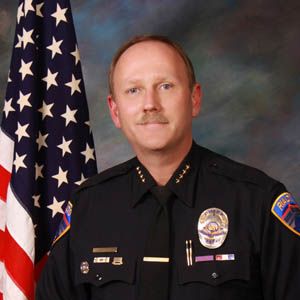
Mayor Bloomberg thinks that compelling police officers to wear cameras — as instructed by Judge Shira Scheindlin in her stop and frisk ruling earlier this week — “would be a nightmare.”
Asked if there was any aspect of his experience with body-worn cameras that he would consider a “nightmare,” Rialto, California, police chief Tony Farrar told Daily Intelligencer: “No.”
Farrar and his small police force have become the poster boys of body-worn cameras, not because they were the first or only ones to use them — much larger cities like Phoenix, Seattle, Oakland, Salt Lake City, and Albequeque have experimented with them as well — but because they were the first and only department to conduct an extensive, controlled, randomized trial measuring the cameras’ effects.
The results, in Farrar’s word, were “truly amazing.” As reported by the Times in April, the year-long trial period ending in February saw an 88 percent drop in complaints against police and a 60 percent reduction in uses of force by the police. And these steep declines occurred even though the cameras were in use only about half the time. (A computer randomly selected which shifts on which days would wear the cameras.)
On Monday, Mayor Bloomberg predicted that, if Judge Scheindlin’s pilot program is upheld by the courts, NYPD officers would be accused of tampering with the cameras. “He’s turned the right way, he didn’t turn the right way, ‘My God, he deliberately did it,’” Bloomberg said, sampling the outcry he foresees. But Farrar said his officers never faced such allegations. And while the head of the Patrolman’s Benevolent Association insisted this week that a camera would become “an encumbrance and a safety issue for those carrying it,” Farrar tells us that his officers couldn’t be happier with their experience using the gadgets.
“We did a department-wide survey before implementation and halfway through, to gauge the department’s feelings,” Farrar says. “And quite honestly, there was not any real change between the survey before the experiment and in the middle. There was high job satisfaction, there was a high feeling that they did have support from the department and the authority to do their job, and there was not much resistance regarding the cameras.”
In September, following the wildly successful test run, the cameras will become permanent fixtures on the uniforms of every Rialto police officer. His troops are “looking forward to wearing them full time,” Farrar says.
Bloomberg would point out that the vast NYPD is a wholly different animal than the Rialto PD. “Get serious, that’s not a rational — there’s some town with 35 cops that has tried it,” he said this morning during his weekly radio interview.
Rialto’s uniformed force actually numbers around 70 officers, but the point stands, and Farrar — while not wanting to get involved in New York’s political disputes — admits that “when you’re talking about larger departments, those that are much larger than ours, there will definitely be some challenges for implementation.” Yet those challenges can be overcome, particularly if the cameras are implemented gradually and carefully.
“Do I think that it’s doable in larger organizations?” Farrar asks himself. “Yes, I think it could be done in stages at larger organizations.”





























